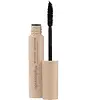What's inside
What's inside
 Key Ingredients
Key Ingredients

No key ingredients
 Benefits
Benefits

 Concerns
Concerns

 Ingredients Side-by-side
Ingredients Side-by-side

Water
Skin ConditioningParaffin
PerfumingCetearyl Alcohol
EmollientStearic Acid
CleansingAcacia Senegal Gum
MaskingPropanediol
SolventSorbeth-20 Beeswax
EmulsifyingCopernicia Cerifera Cera
EmollientPalmitic Acid
EmollientOzokerite
Emulsion StabilisingCera Microcristallina
Emulsion StabilisingHydrogenated Vegetable Oil
EmollientMyrica Cerifera Fruit Wax
EmollientStearyl Stearate
EmollientPhenoxyethanol
PreservativeHydroxyethylcellulose
Emulsion StabilisingSodium Hydroxide
BufferingPanthenol
Skin ConditioningSodium Dehydroacetate
PreservativeGalactoarabinan
Argania Spinosa Kernel Oil
EmollientCI 77499
Cosmetic ColorantWater, Paraffin, Cetearyl Alcohol, Stearic Acid, Acacia Senegal Gum, Propanediol, Sorbeth-20 Beeswax, Copernicia Cerifera Cera, Palmitic Acid, Ozokerite, Cera Microcristallina, Hydrogenated Vegetable Oil, Myrica Cerifera Fruit Wax, Stearyl Stearate, Phenoxyethanol, Hydroxyethylcellulose, Sodium Hydroxide, Panthenol, Sodium Dehydroacetate, Galactoarabinan, Argania Spinosa Kernel Oil, CI 77499
Water
Skin ConditioningParaffin
PerfumingCera Alba
EmollientStearic Acid
CleansingCopernicia Cerifera Cera
EmollientAcacia Senegal Gum
MaskingPalmitic Acid
EmollientTriethanolamine
BufferingPEG-4 Stearate
EmulsifyingSimethicone
EmollientSodium Polymethacrylate
Emulsion StabilisingMyristic Acid
CleansingAminomethyl Propanediol
BufferingHydrogenated Jojoba Oil
AbrasiveHydrogenated Palm Oil
EmollientHydroxyethylcellulose
Emulsion StabilisingPanthenol
Skin ConditioningPolyquaternium-1
BHT
AntioxidantMethylparaben
PreservativePropylparaben
PreservativeCI 75470
Cosmetic ColorantCI 77745
Cosmetic ColorantCI 77288
Cosmetic ColorantCI 77289
Cosmetic ColorantCI 77491
Cosmetic ColorantCI 77492
Cosmetic ColorantCI 77499
Cosmetic ColorantCI 77891
Cosmetic ColorantMica
Cosmetic ColorantWater, Paraffin, Cera Alba, Stearic Acid, Copernicia Cerifera Cera, Acacia Senegal Gum, Palmitic Acid, Triethanolamine, PEG-4 Stearate, Simethicone, Sodium Polymethacrylate, Myristic Acid, Aminomethyl Propanediol, Hydrogenated Jojoba Oil, Hydrogenated Palm Oil, Hydroxyethylcellulose, Panthenol, Polyquaternium-1, BHT, Methylparaben, Propylparaben, CI 75470, CI 77745, CI 77288, CI 77289, CI 77491, CI 77492, CI 77499, CI 77891, Mica
 Reviews
Reviews

Ingredients Explained
These ingredients are found in both products.
Ingredients higher up in an ingredient list are typically present in a larger amount.
Acacia Senegal Gum has skin soothing, thickening, and formulation stabilizing properties. It comes from the Acacia tree that is native to sub-Saharan Africa.
Ci 77499 is also hydrated iron III oxide. It is created from mixing red and black iron oxides. This helps give shades of darkness to a product.
Iron III oxides are classified as inorganic chemicals for coloring.
This ingredient comes from a palm tree native to Brazil. This ingredient is used to thicken texture and leaves behind a film when applied.
Hydroxyethylcellulose is used to improve the texture of products. It is created from a chemical reaction involving ethylene oxide and alkali-cellulose. Cellulose is a sugar found in plant cell walls and help give plants structure.
This ingredient helps stabilize products by preventing ingredients from separating. It can also help thicken the texture of a product.
This ingredient can also be found in pill medicines to help our bodies digest other ingredients.
Learn more about HydroxyethylcellulosePalmitic Acid is a fatty acid naturally found in our skin and in many plant and animal sources. In cosmetics, it is usually derived from palm oil. It serves many purposes in skincare, acting as a cleanser, emollient, and emulsifier.
As an emollient, palmitic acid helps soften and smooth the skin by preventing water loss. In cleansers, it helps remove oil and dirt while creating foam.
Its emulsifying properties help stabilize products by keeping water and oil-based ingredients from separating.
This may not be suitable for fungal acne-prone skin, as fatty acids like this can sometimes trigger breakouts in sensitive individuals.
Learn more about Palmitic AcidPanthenol is a common ingredient that helps hydrate and soothe the skin. It is found naturally in our skin and hair.
There are two forms of panthenol: D and L.
D-panthenol is also known as dexpanthenol. Most cosmetics use dexpanthenol or a mixture of D and L-panthenol.
Panthenol is famous due to its ability to go deeper into the skin's layers. Using this ingredient has numerous pros (and no cons):
Like hyaluronic acid, panthenol is a humectant. Humectants are able to bind and hold large amounts of water to keep skin hydrated.
This ingredient works well for wound healing. It works by increasing tissue in the wound and helps close open wounds.
Once oxidized, panthenol converts to pantothenic acid. Panthothenic acid is found in all living cells.
This ingredient is also referred to as pro-vitamin B5.
Learn more about PanthenolParaffin is a solid created from petroleum. The term 'paraffin' can also refer to either
petroleum jelly or mineral oil.
It has natural occlusive properties which can worsen oily skin. Due to its petrolatum base, this ingredient is not fungal-acne safe.
Stearic Acid is a fatty acid. It is an emollient, emulsifier, and texture enhancer.
As an emollient, stearic acid helps soften skin. It aids the skin's protective barrier by preventing water loss. It also provides a gentle cleansing effect without stripping away natural oils.
Stearic acid may also be used to enhance the texture of products. It can add volume and stabilize ingredients such as water and oil. This can help water and oil ingredients from separating.
Sources of stearic acid include animal or vegetable fats/oils such as coconut or shea. It can be naturally found in butter, cocoa butter, shea butter, vegetable fats, and animal tallow.
This ingredient may not be Malassezia folliculitis, or fungal-acne safe.
Learn more about Stearic AcidWater. It's the most common cosmetic ingredient of all. You'll usually see it at the top of ingredient lists, meaning that it makes up the largest part of the product.
So why is it so popular? Water most often acts as a solvent - this means that it helps dissolve other ingredients into the formulation.
You'll also recognize water as that liquid we all need to stay alive. If you see this, drink a glass of water. Stay hydrated!
Learn more about Water